Mureunggyegok Valley Healing Campground (무릉계곡 힐링캠핑장)
17.8Km 2024-03-19
467 Samhwa-ro, Donghae-si, Gangwon-do
This campground is situated in Mureunggyegok Valley, nestled between Dutasan Mountain and Cheongoksan Mountain. The valley is renowned for its enigmatic rock formations and derives its name from the mythical paradise in the Chinese fable, “The Peach Blossom Land”. It's a place where one can immerse in the beauty of nature. The campground is accessible by car, just a 25-minute drive from KTX Mukho Station.
HILAND HOTEL (하이랜드호텔)
17.9Km 2025-04-18
6626-26 , Gangwonnam-ro, Jeongseon-gun, Gangwon-do
+82-33-591-3500
The Highland Hotel, located at the entrance of High1 Resort in Jeongseon, Gangwon-do, offers visitors to the Gohan area cost-efficient accommodation and is a favorite with winter skiers. The hotel offers a choice between ondol rooms and bedrooms; both are large and comfortable. Guests can use the restaurant on the first floor. Both the High1 Golf Course and Gangwon Land Casino are close by. Nearby visitor attractions include Jeongamsa Temple (one of the 5 Korean temples housing physical remains of the Buddha) - just 8 to 15 minutes away by car; Manhangjae Mountain; and Samtan Art Mine, an art theme-park inside an abandoned coal mine.
Donghae Mureung Health Forest (동해무릉건강숲)
17.9Km 2025-10-23
455 Samhwa-ro, Donghae-si, Gangwon-do
+82-33-530-2391
Situated at the entrance of Mureung Valley, this environmental disease prevention and management center is directly run by Donghae city. Environmental diseases are those that develop due to environmental factors, such as atopic dermatitis, asthma, and allergic rhinitis. This center, spanning approx. 24,000 square meters, consists of an eco-friendly healing lodging, a themed experience center, a health consultation room, a thermal therapy room, and a natural health food restaurant. The accommodation facility, built with eco-friendly materials such as red clay and Hinoki cypress, offers healthy accommodations as well.
The themed experience center is a jjimjilbang (Korean sauna) created using natural materials, such as stones, soil, and salt. The White Sericite Room emits far-infrared rays and natural anions; the Red Clay Room is good for detoxification; and the Salt Cave's nano salt particles help cleanse one's respiratory system. These sauna rooms aid in improving environmental disease symptoms. The thermal therapy room features heated capsule-like beds that promote blood circulation. In addition, a resident nurse provides free health consultations based on visitors' basic examination results. You can participate in various programs without staying overnight, such as handcrafting using eco-friendly materials, themed experiences, health consultations, and a natural health food experience. In summer, don't forget to visit Oseonnyeotang, a nature-friendly bath filled with water from Mureung Valley.
Samcheok Culture & Art Center (삼척문화예술회관)
18.5Km 2021-07-02
45, Expo-ro, Samcheok-si, Gangwon-do
+82-33-572-1331
Samcheok Culture & Art Center is a cultural complex located in Seongnam-dong, Samcheok-si, Gangwon-do. The center opened its doors to the public on June 4th, 1994 with facilities such as grand/small theaters, outdoor performance stages, exhibition halls and more.
Samcheok Jeongwol Daeboreum Festival (삼척정월대보름제)
18.6Km 2025-02-04
45 Expo-ro, Samcheok-si, Gangwon-do
+82-33-573-2882
Samcheok Jeongwol Daeboreum Festival is a festival that blends gijuldarigi, Samcheok's local game of tug-of-war, with other traditional customs of Jeongwol Daeboreum, the first full moon of the Lunar Year. The festival aims to preserve and develop both national and regional customs and traditions as well as to promote the local economy and provide an opportunity to bring the community together.
Jukseoru Pavilion (삼척 죽서루)
18.9Km 2025-02-03
37 Jukseoru-gil, Samcheok-si, Gangwon-do
+82-33-570-3670
Jukseoru Pavilion, estimated to have been built around 1266, is one of the eight major attractions of Gwandong District in middle eastern Korea collectively known as Gwandong Palgyeong (eight famous sites). Sitting on the edge of a cliff overlooking Osipcheon Stream, the pavilion incorporates the rocks on the cliff as cornerstones, with a five-girder paljak (ancient-style roof).
Then, there are 26 signboards hanging from the rafters of the pavilion. The signboards contain inscriptions of famous ancient scholars such as 'Jeilgyeongjeong' ('The best riverside pavilion'; 1662) by Heo Mok, 'Jukseoru' and 'Gwandong Jeilru' ('The best pavilion in Gwandong'; 1711) by Yi Seong-jo, and 'Haeseon Yuhui Jiso' ('The place that marine gods enjoy'; 1837) by Yi Gyu-heon. Others who have left their mark include King Sukjong (1674-1720), King Jeongjo (1776-1800) and Yulgok YiYi (1536-1584). Evidently, Jukseoru Pavilion has served as an inspiration since its establishment, and continues to inspire visitors today through the stunning view of its surrounding nature.
Samtan Art Mine (삼탄아트마인)
18.9Km 2022-08-31
1445-44, Hambaeksan-ro, Jeongseon-gun, Gangwon-do
82-33-591-3001
Samtan Art Mine is an art complex transformed from an abandoned mine. After being used as a coal mine for 40 years, the mine turned into an art complex in 2001. With more than 100,000 art works on exhibit as well as the harmony between the art installations and the interior, which still maintains elements of the former coal mine, the art mine creates a unique atmosphere that cannot be found elsewhere. With lots to see and the availability of many special programs, Samtan Art Mine offers an unique experience and serves as a great photo spot for tourists.
Gulttukchon (굴뚝촌)
19.0Km 2024-03-19
253-6 Samhwa-ro, Donghae-si, Gangwon-do
033-534-9199
This restaurant specializes in daenamu tongbap (steamed rice in bamboo tube) and other healthful dishes that exclusively use natural flavorings. The daenamu tongbap, notable for its complex flavor, is prepared with 12 types of grains filled into a bamboo tube before steaming. It is served alongside choices like bulgogi jeongol (bulgogi hot pot), ori jeongol (duck hot pot), and bullak jeongol (bulgogi and octopus hot pot). The menu also features gamja jeon (potato pancake) and ori gui (grilled duck). Additionally, the restaurant boasts a garden that is home to 180 varieties of wildflowers and herbs.
Samcheok Maengbang Yuchaekkot Village (삼척 맹방유채꽃 마을)
19.0Km 2024-03-08
3916-112 Samcheok-ro, Geundeok-myeon, Samcheok-si, Gangwon-do
Maengbang Yuchaekkot Village is where one can enjoy the scenic view of canola flowers, cherry blossoms, and the ocean all in one place. Located in Geundeok-myeon, Samcheok, this village was considered as a sacred land during the Goryeo dynasty. Now, it is a village that attracts a flock of visitors every April with beautiful canola flowers. The village also holds a canola flower festival every year to celebrate the beauty of canola flowers that bloom near the 4.2-kilometer stretch of cherry blossom road.
Sangmaengbanghaebyeon Beach (상맹방해변)
19.1Km 2025-01-16
Sangmaengbang-gil, Geundeok-myeon, Samcheok-si, Gangwon-do
Sangmaengbanghaebyeon Beach is located 5 kilometers from downtown Samcheok and connected to Maengbanghaebyeon Beach. With a shallow average depth of 1-2 meters, its crystal clear water and white sand makes it a perfect location for a family vacation. The pine forest stretched across the beach allows visitors to enjoy forest bathing. Various beach events are held here such as clam collecting contest, bare-hand trout catching contest, and more. For those who enjoy sports, there is a golf practice range nearby. In spring, the nearby canola field blooms with flowers, creating a picturesque background for visitors to enjoy.
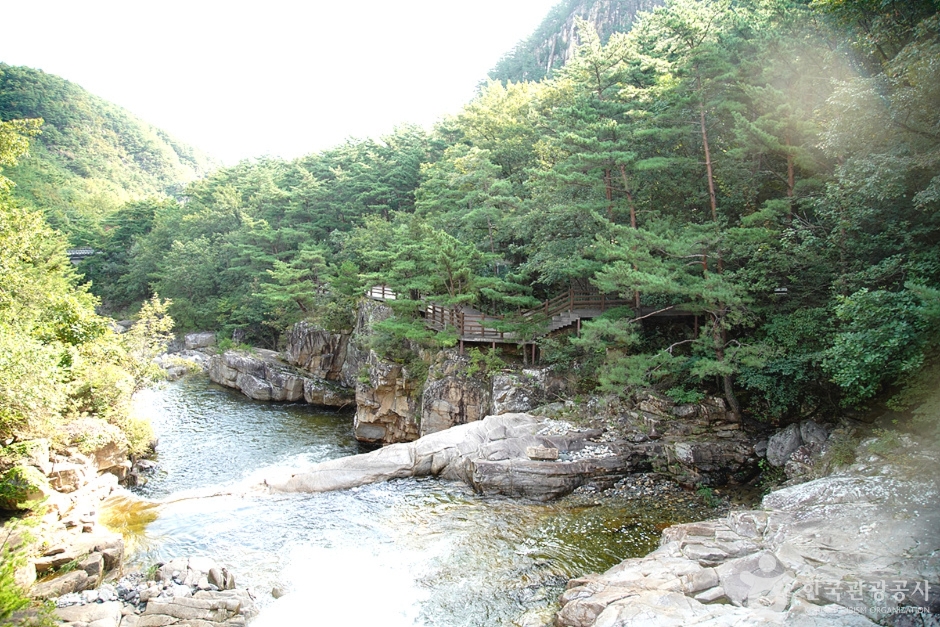
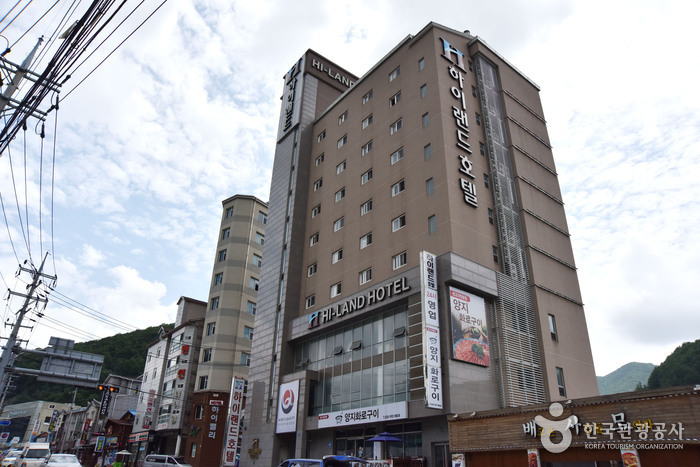
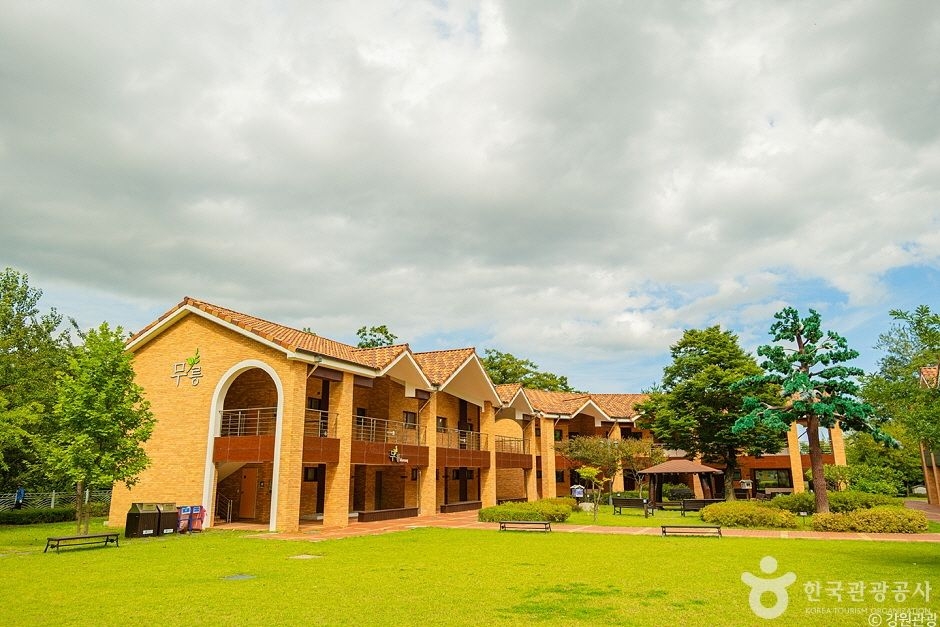
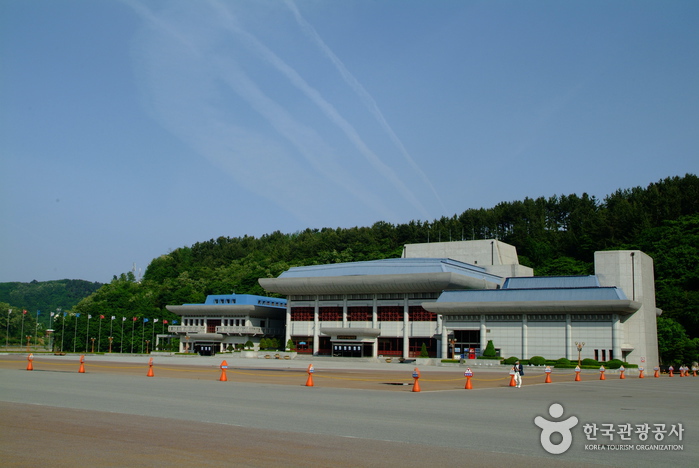
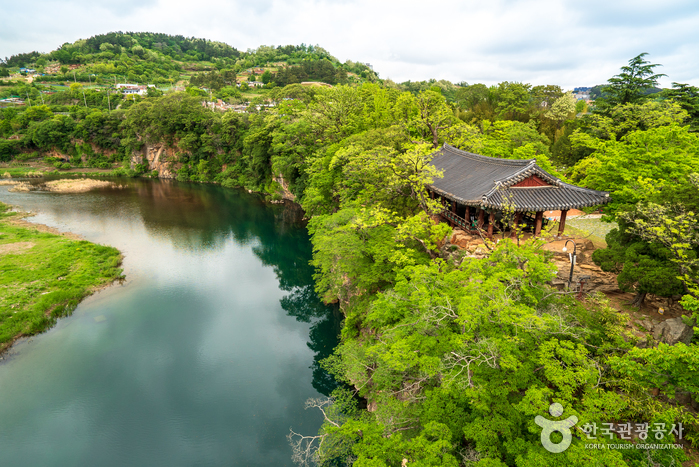
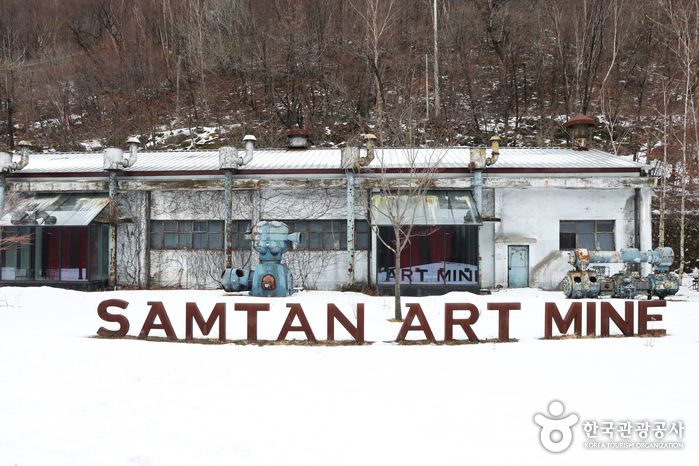
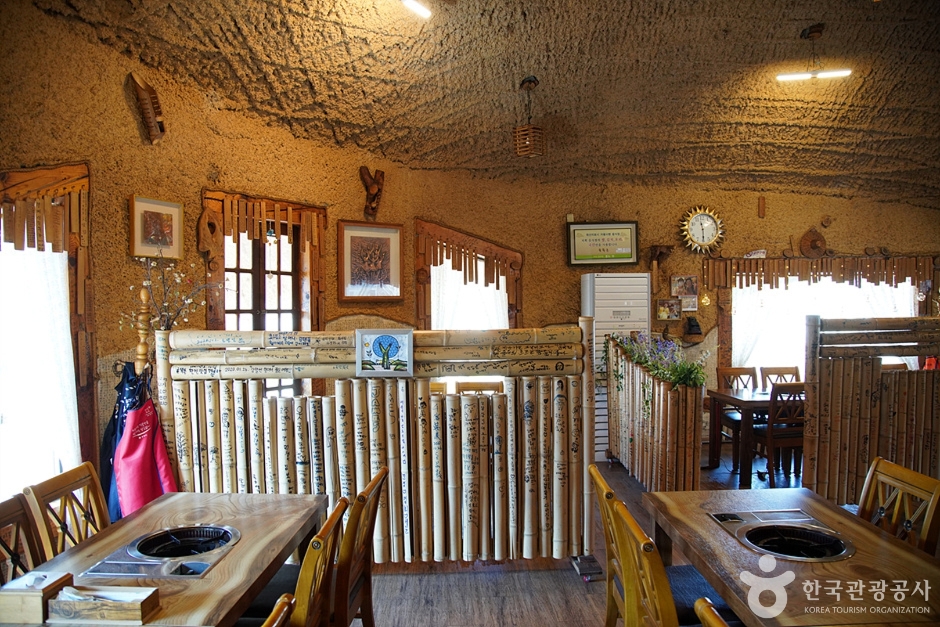
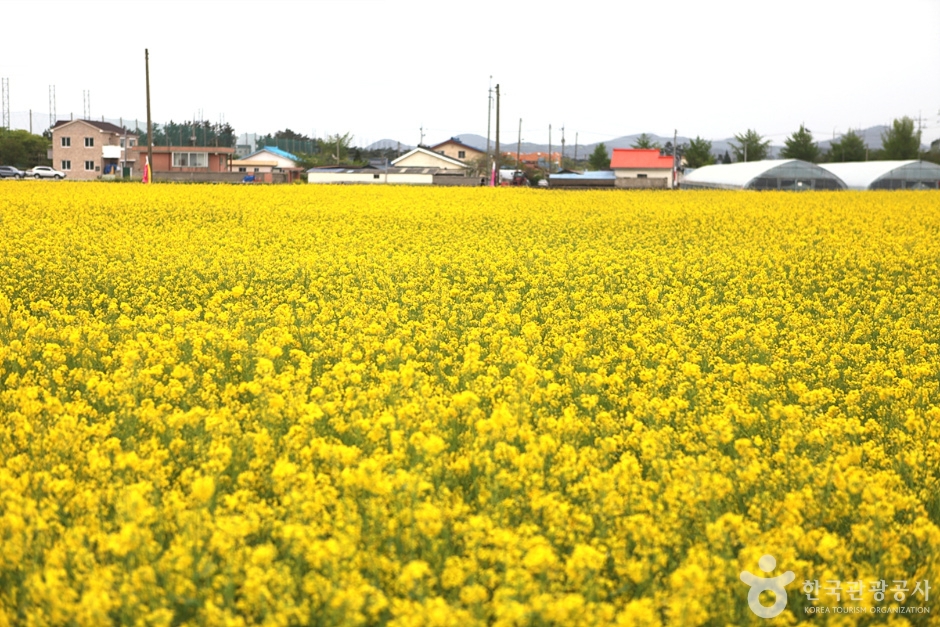
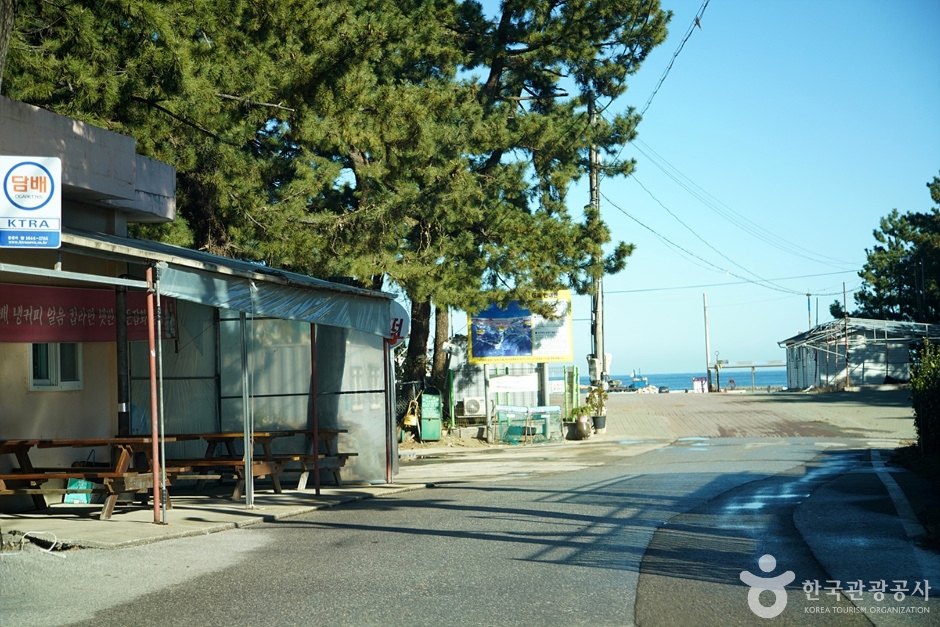
 English
English
 한국어
한국어 日本語
日本語 中文(简体)
中文(简体) Deutsch
Deutsch Français
Français Español
Español Русский
Русский